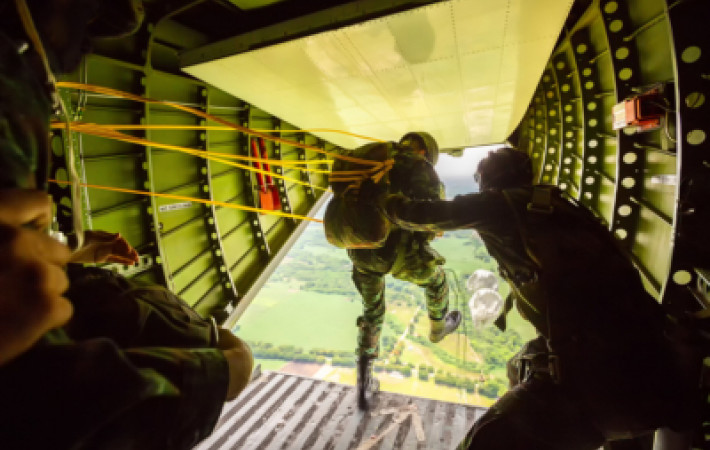25 October 2018
Common military injuries and how to avoid them

Through training to deployment, a military personnel’s health can be affected by a number of causes - from nutrition, hydration and fatigue to environmental extremes, pollutants and hazards.
These situations may become commonplace, but injuries can sometimes occur which have significant impacts on service, home life, and post service prospects. We’ve listed some common military injuries along with their signs and symptoms so you know what to look out for.
Hearing loss
Forces personnel are exposed to excessive noise in the military environment, whether that’s from explosions, vehicles, weapons or pyrotechnics. Debilitating conditions such as tinnitus and noise induced hearing loss can result.
What to look out for: Some reliance on louder volumes and lip-reading; phantom noises such as ringing, buzzing, and hissing which can vary in pitch and occur in one or both ears.
When to get help:
frequent or constant noises
coinciding dizziness
ability to concentrate is affected
mental wellbeing is compromised
a cold occurs prior to or after the symptoms
Vision loss
Vision impairment or loss of vision can be a consequence of chemical burns, blasts and penetrating wounds. Visual disorders, including traumatic eye injury, are the fourth most common injuries amongst active duty personnel.
What to look out for: Recurrent or severe and sudden eye pain; hazy, blurred and double vision; light sensitivity and bright floating spots; spiders webs and curtained vision.
When to get help:
sudden changes in vision
an onset of floaters
significantly more floaters
flashes and floaters in the same eye
curtained sight in the direct field of vision
Heat injury
Heat illness is usually a product of exposure to hot environments. During or after exercise, the body may fail to cool itself adequately which results in heat emergencies. The three serious stages are cramps, exhaustion, and heatstroke.
What to look out for: Dehydration as a result of excessive sweating; dizziness and a throbbing headache; nausea, muscle cramps and weakness.
When to get help:
rapid, shallow breathing
increased heart rate
slurred speech
body temperature of 40 degrees or higher
a sense of irritation, agitation and confusion
Cold injury
Cold injury is caused by exposure to cold temperatures and can lead to poor circulation, nerve damage and limb loss. As a result of wet conditions, non-freezing cold injury (NFCI) is equally serious. Examples include chilblain, trench foot, and frostbite.
What to look out for: Unusual sensations like prickling and numbness; Alterations in appearance such as waxy-looking blue, grey or white skin and blisters, redness, or ulcerations in hands and feet.
When to get help:
intense or painful sensations
increased swelling or discharge
coinciding fever
intense shivering
slurred speech
drowsiness and loss of coordination
Though many activities are required to prepare service personnel for physical and mental demands, the combined impacts of training and combat are sometimes not well understood. Forces personnel with serious injuries can be helped to live fulfilling lives, but appropriate compensation can be crucial to accessing this help.
If you are looking for military advice on personal injury, our specialist lawyers are here to guide you through your available options. Get in touch with our team to see how we can help, by emailing MilitaryEnquiries@wilkinchapman.co.uk outside of office hours, or calling our freephone number 0800 046 2567 on weekdays between 9am and 5pm.
Please note this article has been provided as information only and should not be regarded as specific advice to your needs.